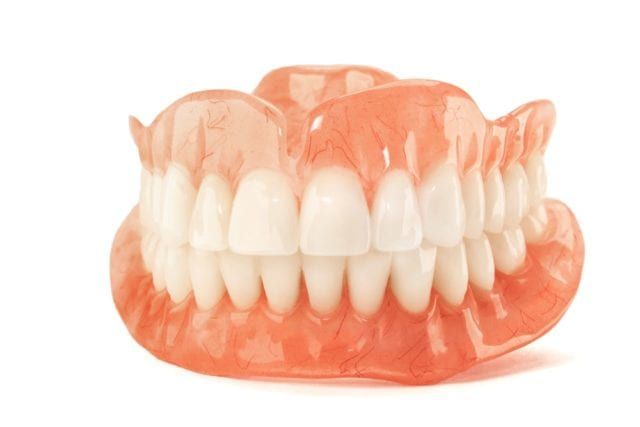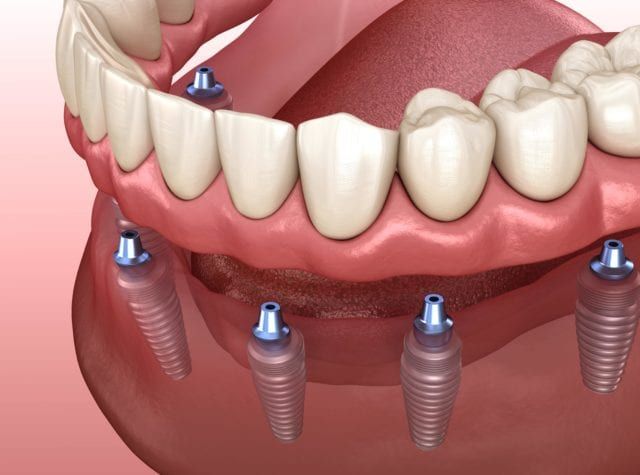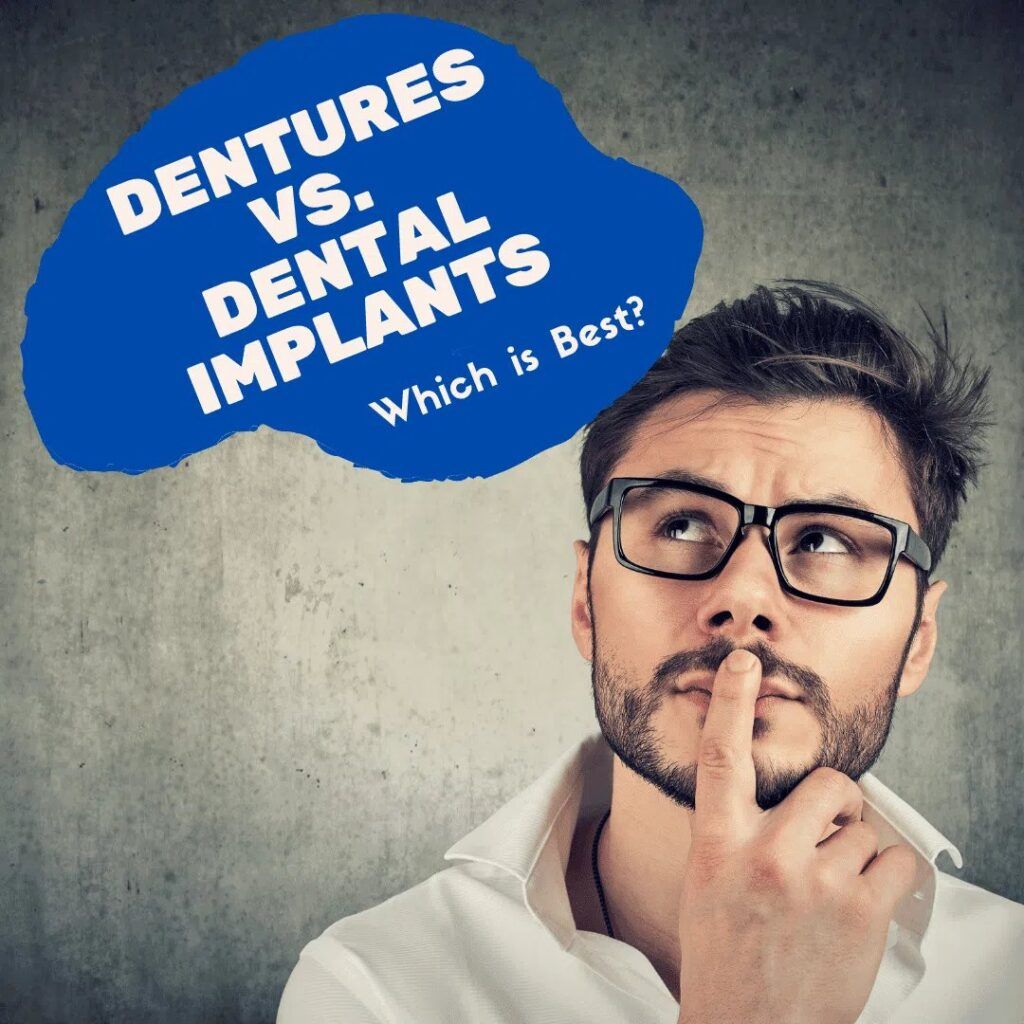Did you know that 12 million Americans are edentulous in at least one arch and 23 million are completely edentulous? Edentulism is a term used to describe the state of being toothless or having no teeth that can occur as a result of damage, decay, gum disease, or even due to extraction. Since being toothless can cause a range of problems, edentulous patients generally look to their dentists for tooth replacement options.
When it comes to restoring an entire arch of missing teeth, there are two options available. The first option, dentures, are both common and recognizable. The second option, dental implants, are not as well known as dentures, but are becoming increasingly popular. While both options are capable of restoring an entire arch of teeth, they do so in very different ways. Because of these differences, patients often wonder which option is better. To help answer this question, let’s take an in-depth look at these two tooth replacement options.
Dentures

Dentures are sets of fake teeth mounted on an acrylic base made to resemble gum tissue. They sit on top of your gums and use suction to remain in place. When used on the upper arch, dentures cover the entire upper palate in order to create the suction necessary for preventing them from falling out. However, many patients still complain that their dentures may slide or move around while speaking and eating.
In most cases, the reason why dentures move is because they no longer fit properly. You see, once teeth are lost, the underlying jawbone starts to deteriorate since it is no longer being stimulated by the force of chewing. As the jawbone deteriorates, it gradually changes shape over time. This means that within a couple of years, the dentures will need to be relined in order to once again fit properly. As the jawbone continues to deteriorate, an entirely new set of dentures may eventually need to be fabricated in order to fit the new jaw structure.
Dental Implants

Dental implants are artificial tooth roots that are placed in the jawbones and used to support a dental prosthetic. In cases where an entire arch of teeth is missing, 4-6 dental implants are generally used to place an implant-supported denture. Unlike traditional dentures, implant-supported dentures are held in place by the 4-6 dental implants. Implant-supported dentures are also open over the palate since they do not rely on suction to stay in place.
Since implant-supported dentures rely on dental implants to keep them stabilized instead of suction, they do not move or slide in the same way that traditional dentures do. Once the implants heal and fuse with the surrounding jawbone, this also allows them to restore a normal ability to bite and chew a variety of foods. Being implanted into the jawbone also means that dental implants continue to stimulate the jawbone through applying the forces of chewing and biting. The continued stimulation of the jawbone prevents bone from being distributed elsewhere in the body and instead keeps it in the jaw where it belongs. This means that the jawbone will not deteriorate over time like it would with traditional dentures. It also means that dental implants can last several years without needing to be replaced.
As you can see, dentures and dental implants are both capable of replacing an entire arch or an entire mouthful of missing teeth in edentulous patients. However, both options offer very different options that can make one question which is the better option. After considering how the two options compare, it becomes evident that dental implants are clearly the best option due to their ability to restore normal chewing function, remain in place while speaking and eating, and to preserve the natural shape and function of the jawbone.

